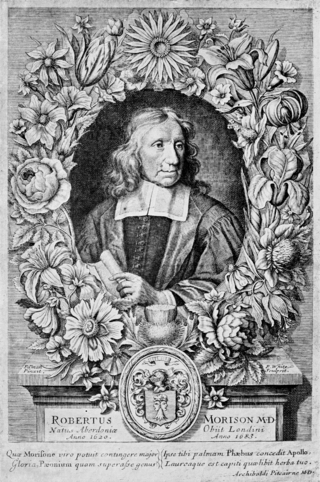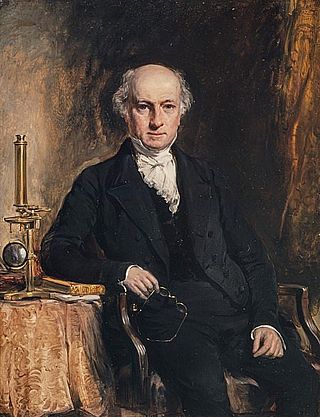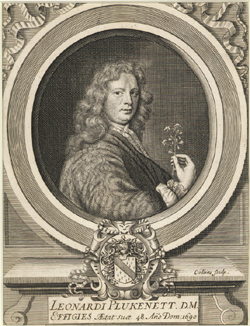
Historia Plantarum (The History of Plants) is a botany book by John Ray, published in 1686.

Historia Plantarum (The History of Plants) is a botany book by John Ray, published in 1686.
Historia Plantarum was published in three volumes: vol 1 in 1686, vol 2 in 1688, vol 3 in 1704. The third volume lacked plates, so Ray's assistant, the apothecary James Petiver, published Petiver's Catalogue, effectively a supplement containing the plates, in parts in 1715–1764. The work on the first two volumes was supported by subscriptions from the President and Fellows of the Royal Society.

John Ray FRS was a Christian English naturalist widely regarded as one of the earliest of the English parson-naturalists. Until 1670, he wrote his name as John Wray. From then on, he used 'Ray', after "having ascertained that such had been the practice of his family before him". He published important works on botany, zoology, and natural theology. His classification of plants in his Historia Plantarum, was an important step towards modern taxonomy. Ray rejected the system of dichotomous division by which species were classified by repeated sub-division into groups according to a pre-conceived series of characteristics they have or have not, and instead classified plants according to similarities and differences that emerged from observation. He was among the first to attempt a biological definition for the concept of species, as "a group of morphologically similar organisms arising from a common ancestor". Another significant contribution to taxonomy was his division of plants into those with two seedling leaves (dicotyledons) or only one (monocotyledons), a division used in taxonomy today.
Historia Plantarum has been used as all or part of the name of several books, which include:
The year 1686 in science and technology involved some significant events.

Francis Willughby FRS was an English ornithologist, ichthyologist, mathematician and an early student of linguistics and games.

Johann Jacob Dillen Dillenius was a German botanist. He is known for his Hortus Elthamensis on the rare plants around Eltham, London, and for his Historia muscorum, a natural history of lower plants including mosses, liverworts, hornworts, lycopods, algae, lichens and fungi.
John Baptist Banister was an English clergyman and one of the first university-trained naturalists in North America. His primary focus was botany but he also studied insects and molluscs. He was sent out as a missionary chaplain by the garden-loving Bishop Henry Compton, with whom he soon established a correspondence. Banister was first in Barbados in the West Indies and then by April 1679 in Virginia, where, while serving a rector of the parish of Charles City he became one of Bishop Compton's most energetic plant collectors, "the first Virginia botanist of any note".

Robert Morison was a Scottish botanist and taxonomist. A forerunner of John Ray, he elucidated and developed the first systematic classification of plants.

Species Plantarum is a book by Carl Linnaeus, originally published in 1753, which lists every species of plant known at the time, classified into genera. It is the first work to consistently apply binomial names and was the starting point for the naming of plants.
James Petiver was a London apothecary, a fellow of the Royal Society as well as London's informal Temple Coffee House Botany Club, famous for his specimen collections in which he traded and study of botany and entomology. He corresponded with John Ray and Maria Sibylla Merian. Some of his notes and specimens were used by Carolus Linnaeus in descriptions of new species. The genus Petiveria was named in his honour by Charles Plumier. His collections were bought by Sir Hans Sloane and became a part of the Natural History Museum.

The history of plant systematics—the biological classification of plants—stretches from the work of ancient Greek to modern evolutionary biologists. As a field of science, plant systematics came into being only slowly, early plant lore usually being treated as part of the study of medicine. Later, classification and description was driven by natural history and natural theology. Until the advent of the theory of evolution, nearly all classification was based on the scala naturae. The professionalization of botany in the 18th and 19th century marked a shift toward more holistic classification methods, eventually based on evolutionary relationships.

Georg Joseph Kamel was a Jesuit missionary, pharmacist and naturalist known for producing the first comprehensive accounts of Philippine flora and fauna and for introducing Philippine nature to the European learned world. A number of Kamel's treatises were published in the Philosophical Transactions, while his descriptions of Philippine flora appeared as an appendix to the third volume of John Ray's Historia Plantarum.

George Johnston was a Scottish physician and naturalist.
The Ray Society is a scientific text publication society that publishes works devoted principally to British flora and fauna. As of 2019, it had published 181 volumes. Its publications are predominantly academic works of interest to naturalists, zoologists, botanists and collectors.

Botanical illustration is the art of depicting the form, color, and details of plant species. They are generally meant to be scientifically descriptive about subjects depicted and are often found printed alongside a botanical description in books, magazines, and other media. Some are sold as artworks. Often composed by a botanical illustrator in consultation with a scientific author, their creation requires an understanding of plant morphology and access to specimens and references.

Leonard Plukenet (1641–1706) was an English botanist, Royal Professor of Botany and gardener to Queen Mary.
Samuel Doody was an early English botanist. He worked as an apothecary, corresponded with Hans Sloane and helped John Ray.
Sir Tancred Robinson was an English physician, known also as a naturalist.
Samuel Browne or Brown was an English surgeon and botanist. He worked in the English East India Company factory at Fort St. George, Madras. Aside from his work he collected specimens of the local plants, especially grasses, along with vernacular names and made notes on their applications in medicine and other traditional use. He corresponded with several other contemporary naturalists including John Ray, Georg Joseph Kamel and James Petiver.

Edward Bulkley was an East India Company surgeon (1602–1709) posted in Madras and a pioneer naturalist. He corresponded with James Petiver and was the first to document the bird species of which a list of birds was published by John Ray. Ray incorrectly notes him as "Buckley". Bulkley also studied the local plants and corresponded with the Jesuit botanist Georg Joseph Kamel and acted as an intermediary between Kamel and Petiver. Bulkley corresponded with Charles du Bois on plants and collected Tamil and Telugu names for many medicinal and economically useful plants.